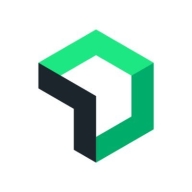

New Relic and NinjaOne compete in the software monitoring and management category. New Relic takes the upper hand with its advanced application performance monitoring, while NinjaOne shines in device management and ease of use for IT professionals.
Features: New Relic offers robust application performance monitoring capabilities, real-time insights, and custom dashboards, making it a strong choice for DevOps teams. It also provides easy installation and detailed reporting features. NinjaOne stands out in device management, remote monitoring, and task automation, with a focus on streamlined remote access.
Room for Improvement: New Relic faces challenges with its complex pricing, data privacy concerns, and needs better error reporting. Users also seek improvements in mobile app monitoring and Azure integration. NinjaOne could benefit from enhanced third-party application integration, better ticketing, and a more intuitive interface. Users suggest improving its analytics features.
Ease of Deployment and Customer Service: New Relic is primarily deployed in public cloud environments but supports hybrid solutions, with responsive customer service. Opinions on its technical support are mixed. NinjaOne uses both public and hybrid cloud deployments, with customer service noted for its efficiency and accessibility. Its support is highly customer-oriented, offering prompt resolution.
Pricing and ROI: New Relic's pricing is on the high side, justified by its capabilities, though often criticized for complexity. Its ROI is linked to reduced downtime and quicker troubleshooting. NinjaOne presents a flexible pricing model, competitive especially when scaled, which is seen as more affordable for institutions like schools. Its pricing is considered fair for the robust features provided.
NinjaOne enables significant time savings, reducing my workload by 40% to 50%, primarily due to remote management capabilities.
Issues that could be solved quickly sometimes take longer because they go around in circles.
I have reached out to customer support multiple times for various cases, particularly for customization such as creating dashboards, and my experience has been good.
Our experience with escalation supports, including auto escalation to third-level or engineering support, has been very positive.
The customer support at NinjaOne is excellent, rated ten out of ten.
I rate customer service and support for NinjaOne at seven out of ten due to slow response times.
I would rate the scalability of NinjaOne as ten out of ten.
The design suggests it is scalable.
I would rate the stability a ten out of ten.
Using real-time data, if there are any malicious patterns or something happening, they can identify those.
Email alert customization is limited; it cannot be tailored much, which makes the system more rigid than optimal.
New Relic can get pricey for larger organizations.
Security and reporting, including business intelligence tools, are adequate.
The inclusion of XENServer and Proxmox as virtual platforms in NinjaOne is currently missing.
The network monitoring needs to be improved.
The pricing for NinjaOne is appropriate for small companies.
NinjaOne is reasonably priced, particularly with the inclusion of TeamViewer, SentinelOne, and Bitdefender.
The price or licensing of NinjaOne is a little bit high.
Using New Relic speeds up troubleshooting and resolution, giving us a clearer picture of where issues are, thus saving time and effort.
Your data is monitored end to end, which could be directly linked with the SLA and SLO.
Another aspect I appreciate is its good alerting mechanism, which can throw alerts and can be configured with PagerDuty or Slack, allowing easy checks on triggers and troubleshooting using New Relic.
Every month, every quarter, I see new features, and it is always evolving.
A significant feature of NinjaOne is its remote access capability, which is essential for my clients’ home office usage.
The software's automation tools have solved critical deployment problems for small businesses.
| Product | Market Share (%) |
|---|---|
| New Relic | 1.8% |
| NinjaOne | 0.5% |
| Other | 97.7% |


| Company Size | Count |
|---|---|
| Small Business | 65 |
| Midsize Enterprise | 50 |
| Large Enterprise | 61 |
| Company Size | Count |
|---|---|
| Small Business | 16 |
| Midsize Enterprise | 2 |
| Large Enterprise | 1 |
New Relic offers real-time application monitoring and insight into performance bottlenecks. Its customizable dashboards and APM integration provide efficient operational support, while server performance alerts ensure quick issue detection.
New Relic provides comprehensive monitoring of application performance, tracking bottlenecks across databases and front-end components. Users employ it for server and infrastructure monitoring, as well as analyzing key metrics such as CPU and memory usage. The solution's ability to integrate with tools like PagerDuty enhances incident management capabilities. However, users have expressed a need for improvements in query language simplicity, more detailed historical insights, and better mobile app monitoring support.
What are New Relic's most important features?In industries like e-commerce and financial services, New Relic supports application performance monitoring to enhance user experience and system reliability. Organizations leverage its insights for optimizing performance, particularly in server operations and infrastructure management. Its ability to monitor API failures through synthetic monitoring is crucial for maintaining high service levels.
NinjaOne provides comprehensive remote monitoring, troubleshooting, and automation via a user-friendly web interface. With a robust mobile app and integration capabilities, it appeals to small businesses seeking cost-effective management solutions.
NinjaOne is designed to streamline IT operations through its remote monitoring, patch management, and automation capabilities. Its integration with Bitdefender and ongoing feature enhancements are valuable, although users express a desire for more third-party compatibility and smoother deployment processes. The platform's SLA system enhances performance tracking, while its continual development is a key attraction. Despite some calls for a more intuitive graphical interface and advanced reporting features, it remains an asset for managed service providers and businesses adapting to cloud-based environments.
What are the most important features?NinjaOne is widely employed across different sectors for server and workstation management, network infrastructure oversight, and client computer support. With its cloud-based framework, it supports managed service providers and businesses shifting to the cloud, ensuring seamless software deployment and improved asset management, making it integral to modern IT environments.
We monitor all Network Monitoring Software reviews to prevent fraudulent reviews and keep review quality high. We do not post reviews by company employees or direct competitors. We validate each review for authenticity via cross-reference with LinkedIn, and personal follow-up with the reviewer when necessary.